Once upon a time only tire you could get for your so-called dirt bike was a trials tire, and you ran a rear size on your front wheel, too. But that ancient history shouldn't completely disqualify the time-tested trials tire from being able to work in this day and age, should it?Dirt Rider set out to give four brands of trials tires a workout and see which ones grabbed us.First a caveat: These tires will not take over the earth. They are really good for trail riding,mostly for riders who do not spin or skid their rear wheel much. For racing applications, they are probably not the best choice-unless you race very mellowly! Another benefit is that they are good for the trails because they don't throw too much roost, they just hook up. These tires, even when we ran them at 12 psi, have excellent bump-compliance and all of them aided the suspension feel. Here's how they worked:Loam
About the worst place for a trials tire is where the traction is the best, so of course loam is far from home for these puppies. Here you are used to getting that full-on bite and dig of a true knobby, rewarding you with clawing action, and a trials tire is much more inclined to spin up with this much juice.Flats
You get pinch flats more readily on a trials tire due to the softer sidewalls, and it is a bit easier for sticks to stab through the softer rubber between the knobs. If you smack into rocks and nail square-edged bumps hard, you will pay in flat tires and in rim dings.Mud
They might look like they'd pack up and not grip, but the knob spacing is so close that they do not let the mud reduce the bite of the tire too much. And they seem to dig in deeper in soft stuff and float smoother on the slightly cakey mud than a normal knob.Spinning/Skidding
If you are the roost-skid-repeat kind of rider, a trials tire will frustrate you and put you on your head. They don't work when spinning, and they are even worse when in a full-lock skid.Great for Trails
One thing we've seen is that trials tires are great for trails. They don't displace too much dirt and since they hook up better in technical areas (the parts of trails that get beat up the worst), they help preserve soil conditions. And if you wonder how enemies of trail riders are going to go after us as soon as we conquer sound, I have one word for you: erosion. Something that guards against that is a happily-ever-after.
Latest
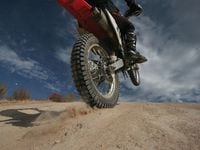
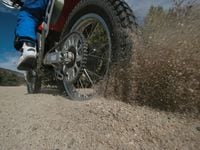
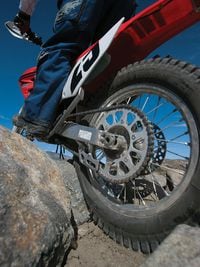
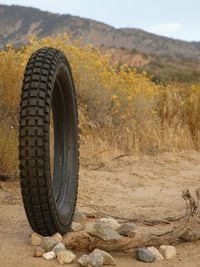
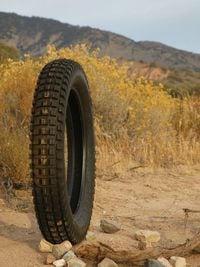
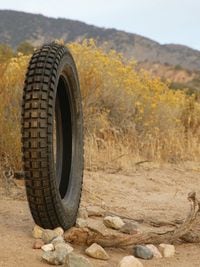
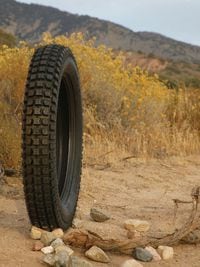
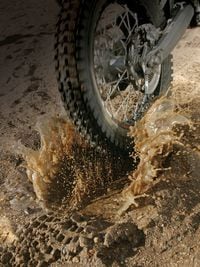
/cloudfront-us-east-1.images.arcpublishing.com/octane/WOYUZXUAMBCZZJ3BQWOEQJGR5M.jpg)
/cloudfront-us-east-1.images.arcpublishing.com/octane/OBHVYZHWBBAZTALZA4GC5RM5WA.jpg)
/cloudfront-us-east-1.images.arcpublishing.com/octane/ZJPPRO5CRNFYPEVMWIFR7RRFQQ.jpg)
/cloudfront-us-east-1.images.arcpublishing.com/octane/MMAOLEHZG5CBXAOICNKNGCEK4I.jpg)
/cloudfront-us-east-1.images.arcpublishing.com/octane/KQUVDTNB6VF53CRDNN47BE3VUA.jpg)
/cloudfront-us-east-1.images.arcpublishing.com/octane/3T32INAZQRGPXOGGA36NQJDSSM.jpg)
/cloudfront-us-east-1.images.arcpublishing.com/octane/EPLS5PBKXBHNXK7S5O7G4ND3YQ.jpg)
/cloudfront-us-east-1.images.arcpublishing.com/octane/MNGOZAGZFZBH5DPFV7NOPF5S3Y.jpg)
/cloudfront-us-east-1.images.arcpublishing.com/octane/VGJWIIFM2VBCXG34KRQ37GCP7U.jpg)
/cloudfront-us-east-1.images.arcpublishing.com/octane/2ZU3HXRPMZESJF7HDLZJV7FHEY.jpg)
/cloudfront-us-east-1.images.arcpublishing.com/octane/VVFWQBZEIZDVJHZIW5ISKWKOZU.jpg)
/cloudfront-us-east-1.images.arcpublishing.com/octane/7T7FZXHIIBDX7AOBD5S3IICUJI.jpg)
/cloudfront-us-east-1.images.arcpublishing.com/octane/T3Y7A52TXBEBJNEPGOQSVPQSPU.jpg)
/cloudfront-us-east-1.images.arcpublishing.com/octane/KY33U3WBTNFIBJFMTEF2SM7BOQ.jpg)
/cloudfront-us-east-1.images.arcpublishing.com/octane/JNPS5MGVXJC7BARVMARYQIQHXE.jpg)
/cloudfront-us-east-1.images.arcpublishing.com/octane/63N2P6SYAZDURJDO5KARQYX2J4.jpg)
/cloudfront-us-east-1.images.arcpublishing.com/octane/C72WX35SXFETTO5OVA2RWT523I.jpg)
/cloudfront-us-east-1.images.arcpublishing.com/octane/F3ER37EV2RGY5CRYFNTWE3JSF4.jpg)
/cloudfront-us-east-1.images.arcpublishing.com/octane/L65QCUR32RH2NKCUHXYHHAPDFI.jpg)
/cloudfront-us-east-1.images.arcpublishing.com/octane/VSK246VVRRDMBNQU7B2NTNY6AE.jpg)
/cloudfront-us-east-1.images.arcpublishing.com/octane/CG64RRFAYRENNAP2AA22T2LSJY.jpg)
/cloudfront-us-east-1.images.arcpublishing.com/octane/IKZSRLBWMRDORMORBXSISL4D6M.jpg)
/cloudfront-us-east-1.images.arcpublishing.com/octane/BJLVRPJSDFC3ZLPMW3LYYHMPZE.jpg)
/cloudfront-us-east-1.images.arcpublishing.com/octane/RQW2RFU4MJDYRPVFJNW362SEXU.jpg)